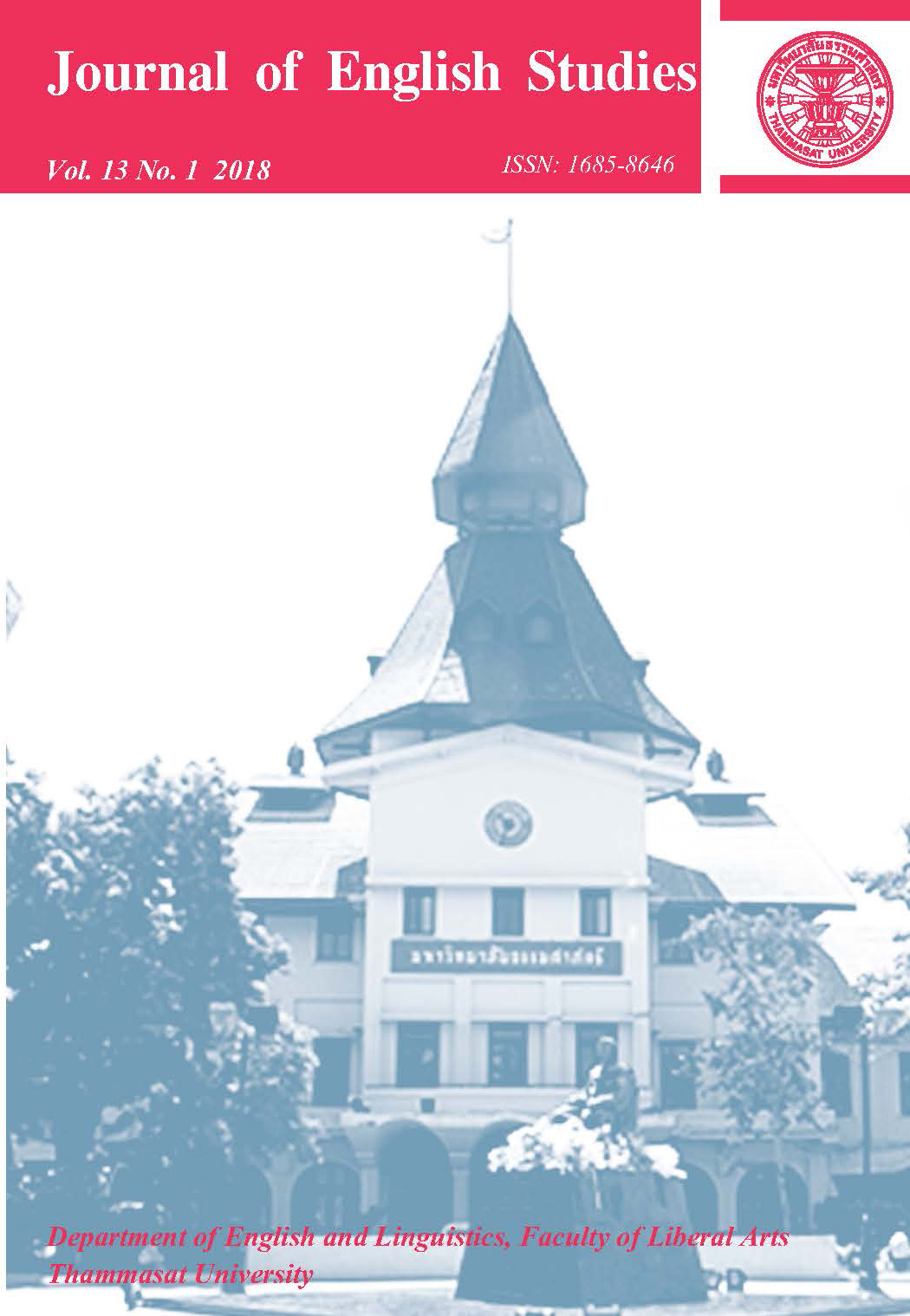Roles of English in facial cosmetic advertisements in Thai Magazines
Main Article Content
Abstract
An advertisement is one of the communication tools that product owners commonly produce to persuade potential customers to buy their products. To do so, choice of language in advertisements can be crucial not only to convey messages to customers, but also to play some other roles. In this era of globalization, English is very influential worldwide and thus it is a prevalent language choice in advertisements. The inclusion of English in advertisements might not be necessary, in terms of transferring meaning in situations where the target audience do not truly use the language. However, it can be observed that in a non-English speaking country like Thailand, English regularly appears along with the local language, Thai, in print advertisements, even for Thai products. To understand more about the roles of English in print advertisement in Thailand, this study analyses the language used in 100 facial cosmetic advertisements available in Thai magazines. The findings reveal that English is not really used for presenting meaning, rather it functions as a tool for getting attention, enhancing a product’s image and value, and denoting modernization.
Article Details
References
Nelson (Eds.), The handbook of world Englishes (pp. 601-619). Oxford: Blackwell.
Bhatia, T., & Ritchie, W. C. (2004). Bilingualism in the global media and advertising. In K. Bhatia & W. C. Ritchie (Eds.), The handbook of bilingualism (pp. 513-546). Oxford: Blackwell.
Chantarothai, T. (2011). The effect of code-mixing (Thai-English) in print advertisements on
product knowledge and understanding, attitudes and purchase intention: consumer’s
educational background as a moderator (Unpublished master’s degree dissertation).
Thammasat University, Thailand.
Cook, G. (1992). The discourse of advertising. New York, NY: Routledge.
Crystal, D. (2003). English as a global language. Cambridge: Cambridge University Press.
Friedrich, P. (2002). English in advertising and brand naming: Sociolinguistic considerations and
the case of Brazil. English Today, 18(3), 21-28.
Kelly-Holmes, H. (2005a). Advertising as multilingual communication. Basingstoke: Palgrave
MacMillan.
. (2005b). Languages and global marketing. In N. Coupland (Ed.), The
handbook of language and globalization (pp. 475-492). Oxford: Blackwell.
Martin, E. (2002). Mixing English in French advertising. World Englishes, 21(3), 375–402.
Nelson, M. R., & Paek, H. J. (2007). A content analysis of advertising in a global magazine
across seven countries. International Marketing Review, 24(1), 64-86. Oxford Dictionary of English (3rd ed.). (2010). England: Oxford University Press.
Planken, B., Meurs, F. V., & Radlinska, A. (2010). The effects of the use of English in Polish
product advertisements: Implications for English for business purposes. English for
specific purposes, 24, 225-242. Royal Institute of Thailand Dictionary. (2011). Thailand: Royal Institute of Thailand.
Ruellot, V. (2011). English in French print advertising from 1999 to 2007. World Englishes, 30(1), 5-20.
Sanprasert-Snodin, N. (2014). English naming and code-mixing in Thai mass media. World Englishes, 33(1), 100-111.
Seidlhofer, B. (2011). Understanding English as a lingua franca. Oxford: Oxford University
Press.
Shooshtari, Z., & Allahbakhsh, M. (2013). Mixing English in Persian print advertising discourse.
International Journal of Society, Culture & Language, 1(2), 82-95.
Smalley, W. A. (1994). Linguistic diversity and national unity: Language ecology in Thailand.
The University of Chicago Press.
Thurlow, C., & Jaworski, A. (2003). Communication a global reach: in-flight magazines as a
globalizing genre in tourism. Journal of Sociolinguistics, 7(4), 579-606.


